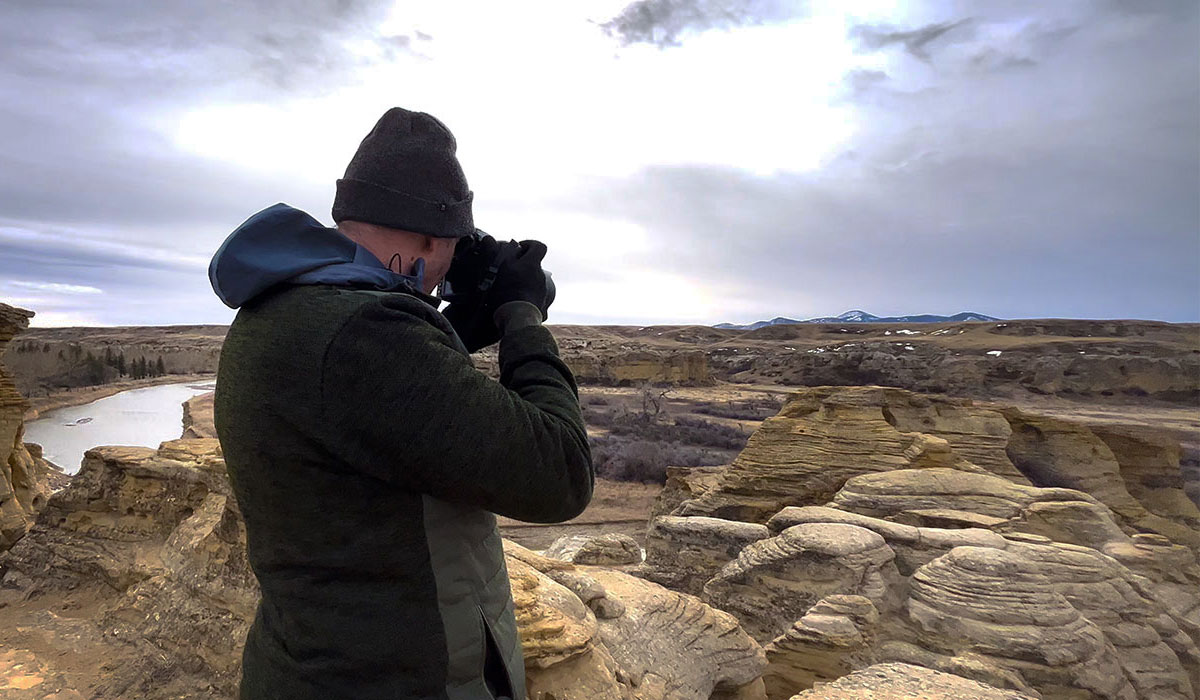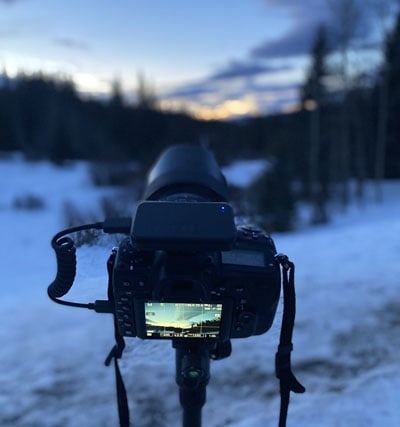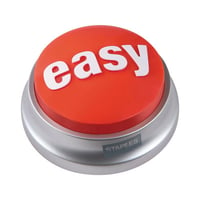
As an amateur photographer, the Arsenal appeared to be just what I'd been hoping for. From the moment I saw that first ad, I was sold. AI-Assisted photography promised to set up my camera perfectly for any shot. Who wouldn't want that?

I dreamt of all the glorious sunsets and sunrises I would take. I read the manual, purchased the accessories, and even made photo trip plans, intending to fly to South Africa for a self-driven photo safari from campsite basecamps...lions and hyenas be damned!
What caught my interest the most though, was the device's Smart AI feature. "Smart" would help me to shoot perfect images at the click of a button. For "button clicking" practice, I drove to Dry Island Buffalo Jump, a deep canyon featuring a winding river at its base. From atop the nearby hillside, one tap on the Arsenal's mobile App and the river valley popped into perfect focus. "This is easy," I remember saying aloud.
Over the ensuing weeks, I used the device many times. My photo composition improved. The number of good images I captured improved. My photos got noticeably better. But...
Late one night I tried something more adventurous, Night Assist. Astrophotography was something I never really thought I could do, but I was willing to try it. I set up in a farmer's field and followed the App's directions. Not going to lie...watching my first Milky Way appear on my screen had me jumping with joy. I’d never seen such colour or clarity. I’ll never forget that moment, nor the sounds of cows mooing & coyotes howling in the distance.

I flipped the switch to manual. Turned this dial, slid that slider, and promptly blew up all the settings. 😫
Subsequent images were blown out white or too dark to see. In a bit of a panic, I quickly switched back to Smart mode hoping to undo what I'd done. My images continued to turn out poorly. I spent hours frantically chatting with Arsenal's tech support, asked how to reset the device and app, and suggested something was wrong with it.
Had I learned to set the camera myself, I may have still gotten good or bad pics, but I would have known better how to address the outcomes. Without the frustration.
I’ve since sought out advice and training and learned a lot more about adjusting my camera settings independently. I’ve invested time and effort to do so, and my images turn much out better. They aren’t perfect, but definitely better.
As I look back on the roller coaster of emotions and costly trips that yielded poor results, I recognize that I was a victim of (participant in?) “the Answer.” It's one of the things our minds look for when problem-solving, like "can't I take better photos?" Consciously or not, our minds process questions like that, along with “what's in it for me," or more accurately, "will it feed me or will it eat me?” As humans, we all do it.

Marketing experts love the Answer. Staples leveraged it for their marketing campaign, “the easy button” and Apple marketing suggests, “there’s an app for that.” In fact, the entire sales and marketing world does it on a daily basis.
What’s in it for me; Trust us, other people do; Our paint colors will light up your life...all parts of the same thing. It’s simply how our brains work. In recognizing that we are creatures of eons-old habits, we have an opportunity to process these things with more clarity and less emotion.
You may not think the Answer impacts website design, but it does. How many times have you switched platforms or tried new plugins? What about Apps on your phone? The Answer makes you do that.
You and I both thought we were making informed decisions all along. Sobering.
Want to learn more about how our minds play tricks on us? Download the 12 Questions PDF below.